

As we know, there is a three step process involved in Heap Sort:
We will be using arrays for implementing Heap and sort the values in descending order.
<html>
<body>
<script>
function heapify(arr, root, length) {
var left = (2*root)+1
var right = (2*root)+2
var smallest = root
if (left < length && right <= length && arr[right] < arr[left]) {
smallest = right
}
else if (left <= length) {
smallest = left
}
if (arr[root] > arr[smallest]) {
var temp = arr[root]
arr[root] = arr[smallest]
arr[smallest] = temp
heapify(arr, smallest, length)
}
}
function buildHeap(arr) {
let len = arr.length-1
for (let parent = Math.trunc((len-1)/ 2); parent >= 0; parent--) {
heapify(arr, parent, len)
}
}
function deleteMin(arr) {
let len = arr.length-1
//Extract elements one by one from Heap
for (let last = len; last > 0; last-- ) {
temp = arr[0]
arr[0] = arr[last]
arr[last] = temp
heapify(arr, 0, last-1)
}
}
function sort(arr) {
// Build heap (rearrange array)
buildHeap(arr)
deleteMin(arr)
}
var arr = [4,78,32,2,45,11]
document.write("Array before Sorting </br>")
for (i of arr) {
document.write(i, " </br>")
}
sort(arr)
document.write("</br> Array after Sorting </br>")
for (i of arr) {
document.write(i, " </br>")
}
</script>
</body>
</html>
So, in the above code we have four methods:
The best thing about the methods are, they are quite self explanatory.
As we know, the process involved in HeapSort are :
And that's exactly what the above methods are doing.
The buildHeap(...) method is building the Heap. Also, buildHeap(...) method takes the help of heapify(...) method to construct the Heap.
Then deleteMin(...) method comes into picture, which takes the minimum element from the root and places at the end of the array. Then uses heapify(...) method to correct the Heap.
And, finally we have the sort(...) method, that clubs all the methods and gives us a sorted result.
Let us understand the entire flow :
Initially, we take the array,
var arr = [4,78,32,2,45,11]
And pass it to the sort(...) method,
sort(arr)
The sort(...) method is quite simple.
function sort(arr) {
// Build heap (rearrange array)
buildHeap(arr)
deleteMin(arr)
}It calls the buildHeap(...) method for building the array.
Then calls the deleteMin(...) method for deleting the minimum element from the the root and place it at the end of the array.
function buildHeap(arr) {
let len = arr.length-1
for (let parent = Math.trunc((len-1)/ 2); parent >= 0; parent--) {
heapify(arr, parent, len)
}
}Let us understand the above method with the existing structure.
We have an array of 6 numbers,

Let us form a logical binary tree with it,
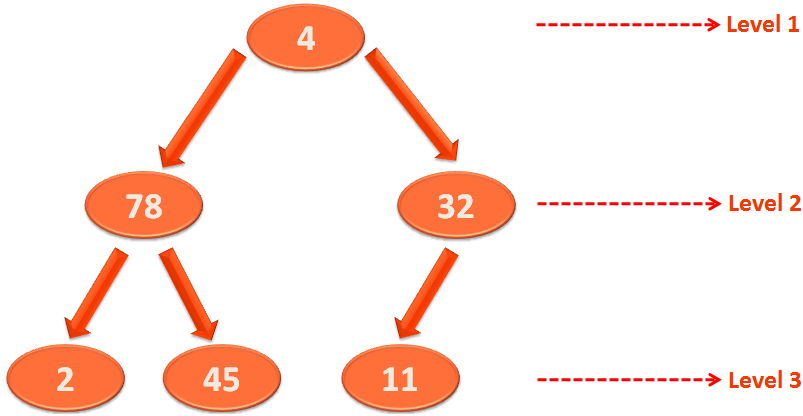
As we know, the elements in Level 3 satisfies the Heap property, as they don't have any child Nodes.
So, we need to target the Nodes of Level 2 and apply Heapify on them.
And that's exactly what we are doing,
for (let parent = Math.trunc((len-1)/ 2); parent >= 0; parent--) {
heapify(arr, parent, len)
}We have taken the last element and calculated its parent.
i.e. The formula to calculate the parent is
parent = (element-1)/2
The position of last element is 5.
So,
parent = (len-1)/2 parent = (5-1)/2 = 2
And the parent of arr[5] (i.e. 11) is arr[2] (i.e. 32).
So, the for loop becomes,
for (let parent = 2; parent >= 0; parent--) {
heapify(arr, parent, arr.length-1)
}Now, is it clear?
We are running the for loop, starting with the parents and applying Heapify on each of them.
Say for example, we will apply Heapify on 32 at first,
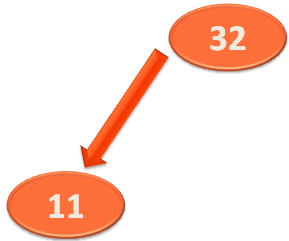
Then apply Heapify on,
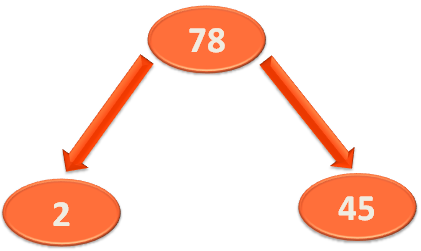
And loop goes on until it reaches the root.
function heapify(arr, root, length) {
var left = (2*root)+1
var right = (2*root)+2
var smallest = root
if (left < length && right <= length && arr[right] < arr[left]) {
smallest = right
}
else if (left <= length) {
smallest = left
}
if (arr[root] > arr[smallest]) {
var temp = arr[root]
arr[root] = arr[smallest]
arr[smallest] = temp
heapify(arr, smallest, length)
}
}Let us take a small chunk of the Heap and understand the above Heapify code:
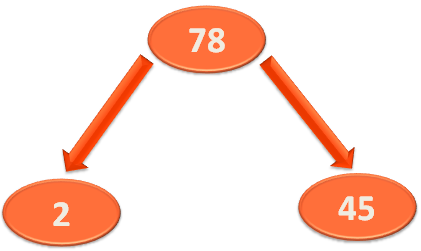
So, the array representation of the above Heap would be,
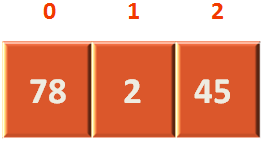
So the root variable would contain 0 and length variable would contain 2.
function heapify(arr, root, length)
Similarly, left variable would be 1.
left = (2*root)+1
As,
left = (2*0)+1 = 1
And, right variable would be 2.
right = (2*root)+2
Next, we have initialised the smallest variable with the root variable(We will explain this soon).
smallest = root
The smallest variable denotes the position.
Now, let us revisit the logic of Heapify.
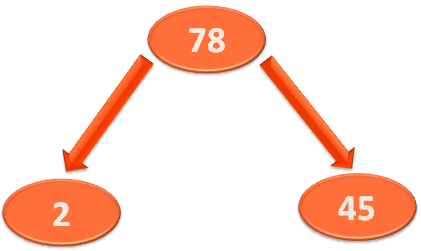
That's exactly we have done in the code.
if (left < length && right <= length && arr[right] < arr[left]) {
smallest = right
}
else if (left <= length) {
smallest = left
}We are checking, if arr[right] is less than arr[left]. If so, we can consider right element is the smallest. And can initialise,
smallest = right
Else, we can suppose left element is the smallest element and can initialise,
smallest = left
To simplify,
arr[smallest] = 2 (Since, the left value is smaller than the right)
But what about the condition left < length && right <= length in the if statement and left <= length. Don't worry! We will explain it soon.
Now, since we have found out the smallest of left and right. According to the logic of Heapify,
And, so we have done,
if (arr[root] > arr[smallest]) {
var temp = arr[root]
arr[root] = arr[smallest]
arr[smallest] = temp
heapify(arr, smallest, length)
}We have checked if the root element arr[root] (i.e. arr[0] or 78) is greater than arr[smallest] (i.e. arr[1] or 2).
If so, we swap it.
var temp = arr[root] arr[root] = arr[smallest] arr[smallest] = temp
And the new Heap becomes.
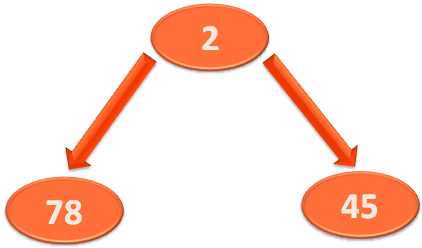
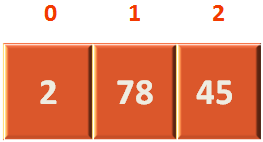
Then we make a recursive call to heapify(...) method, to check if there are any more children or not(In this case we have 3 elements but there can be more elements).
So, in the recursive call to heapify(...) method. We substitute the root variable with the smallest variable.

So, the heapify(...) method is called with the new set of values,
function heapify(arr, root, length)
Now, root = 1. (Because we have initialised smallest to root in the recursive call).i.e. root is pointing arr[1] where 78 lies.

But the strange thing is, left is referring to a location 3. That does not exist.
left = (2*root)+1 left = (2*1)+1 left = 3
At the same time right is referring to location 4. Which doesn't exist as well.
right = (2*root)+2 right = (2*1)+2 right = 4
Now, if we refer to arr[3] or arr[4], it will throw an exception.
And the below condition comes to rescue at this point.
smallest = right
}
else if (left <= length) {
smallest = left
}The condition left < length and right <= length checks, if the left and right element exists or not.
As in this case left and right element doesn't exist.
And the value of left is 3 and right is 4. But the value of length is 2.
So, the condition left < length and right <= length fails.
And it comes to the else statement,
else if (left <= length) {
smallest = left
}Even this condition fails, as left is 3 and length is 2.
Now, the question would be, what would be the value of smallest?(As null of the if conditions met).
And, this is the time, the default initialisation of smallest variable comes into picture.
smallest = root
And the next if statement containing the recursive call to heapify(...) fails (Since, arr[root] is never greater than arr[root]. As root = smallest).
if (arr[root] > arr[smallest]) {
var temp = arr[root]
arr[root] = arr[smallest]
arr[smallest] = temp
heapify(arr, smallest, length)
}And the method exits as the recursive call to heapify(...) fails.
So far we have dealt with the numbers 78, 2 and 45.
Let's take the bigger picture of the Binary Tree from the previous tutorial,
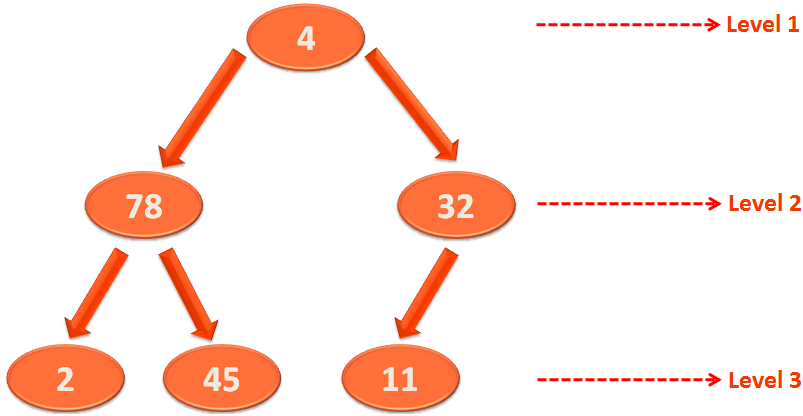
As we have seen, the buildHeap(...) method calls void heapify(int arr[],int root, int length) method.
Where the value of root variable is 2.
So, we will be applying Heapify on 32.
Just like the above explanation. We will compare left and right element.
if (left < length && right <= length && arr[right] < arr[left]) {
smallest = right
}
else if (left <= length) {
smallest = left
}But the thing to be noted is, there is no right element.
And this is when the condition left <= length of else statement comes into picture.
Where smallestvariable is directly initialised with the left variable(Since, there is no right variable).
And the swapping happens and the heapify(...) method ends.
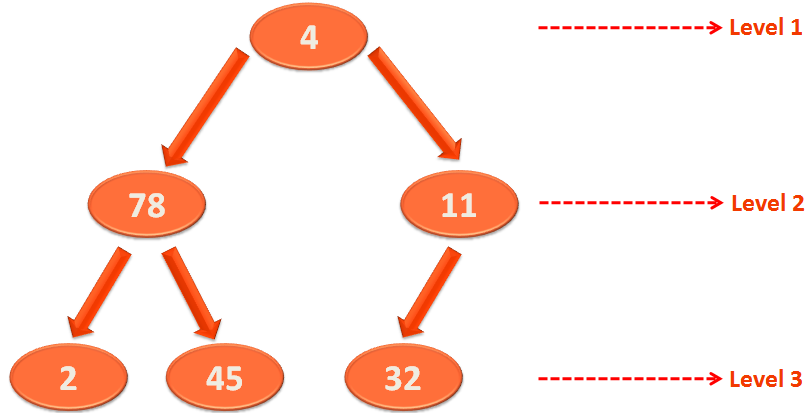
Again, control goes to buildHeap(...) method and heapify(...) is called again.
And 78 is dealt with.
Once again the swapping is done and control goes to buildHeap(...) method.
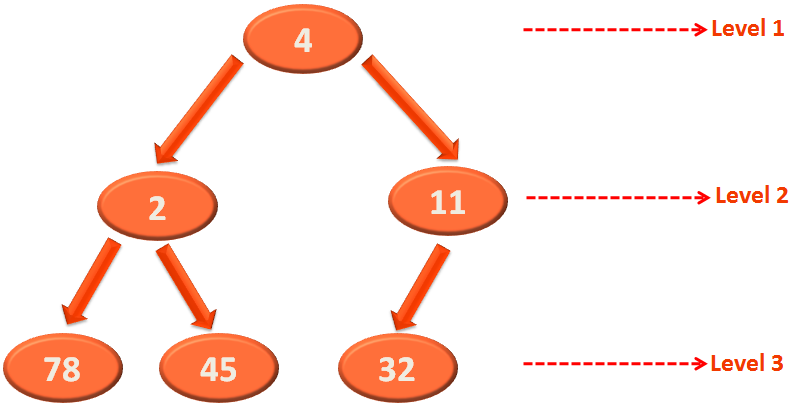
Now, the buildHeap(...) method calls heapify(...), dealing with the root element 4 finally.
As usual, we check if the left element i.e. 2 or the right element i.e. 11 is smaller and the swapping is done.
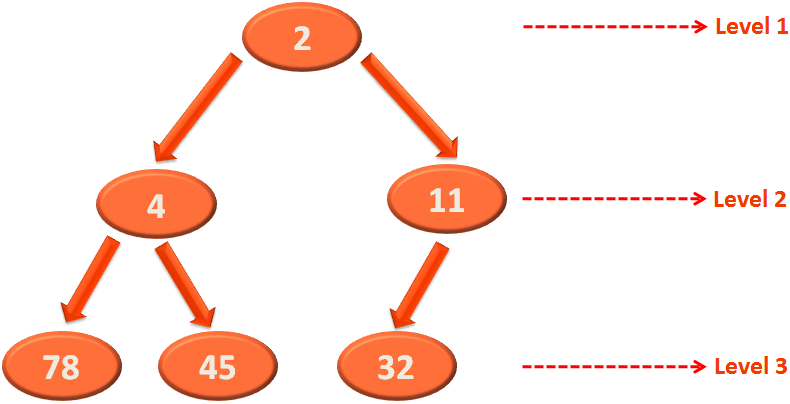
And the recursive call to heapify(...) is made making 4 the root element. And no change is made.
And finally, we get a Heap.
Now, comes the deleteMin(...) method for sorting.
function deleteMin(arr) {
let len = arr.length-1
//Extract elements one by one from Heap
for (let last = len; last > 0; last-- ) {
temp = arr[0]
arr[0] = arr[last]
arr[last] = temp
heapify(arr, 0, last-1)
}
}Let us take the above Heap,
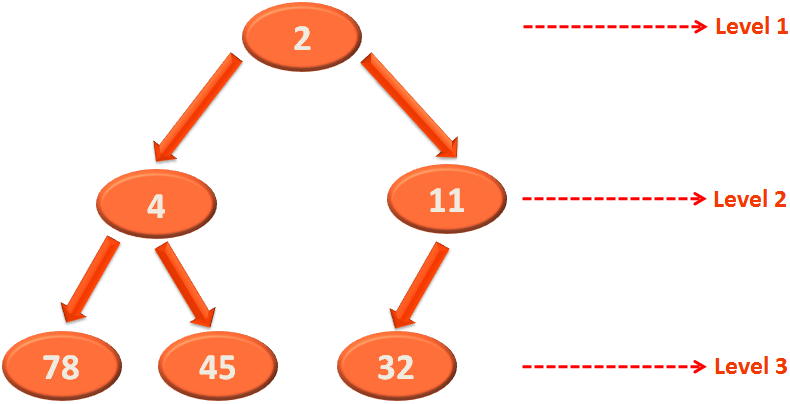
for (let last = len; last > 0; last-- )
temp = arr[0] arr[0] = arr[last] arr[last] = temp


heapify(arr, 0, last-1)


And, after completing the loop we get the final array in descending order.


There is a three step process involved in Heap Sort:
Now, if we analyse the running time.
Building a Heap can be done in O(n) time.
Removing the element takes O(log n) time.
Heapify takes O(log n) time.
Combining all the above running time, we get:
Total running time for Heap Sort : O(n log n)